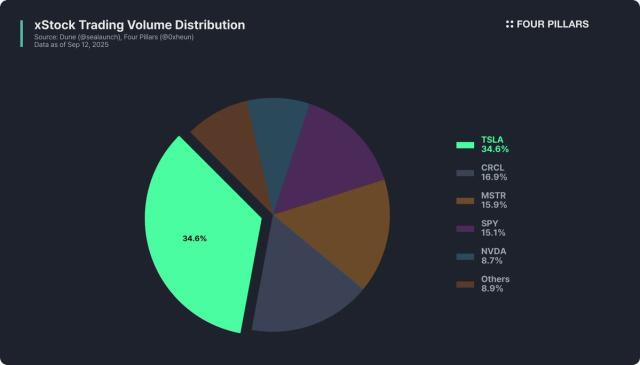The US Federal Reserve (Fed) will announce its monetary policy decision and publish a revised Summary of Economic Projections (SEP), also known as the DOT plot, after its September policy meeting on Wednesday.
Market participants widely expect the US central bank to cut its policy interest rate for the first time since last December, lowering it to a range of 4%-4.25%.
The CME FedWatch tool shows investors see only a 6% chance of a larger rate cut, while pricing in about an 80% chance of a total of 75 basis points (bps) of cuts for the rest of the year. This means the market is expecting the Fed to cut rates by 25 bps at each meeting through the end of the year, barring a larger-than-normal cut.
The revised Summary of Economic Projections (SEP), released in June, showed policymakers' forecasts imply 50 bps of rate cuts in 2025 – less than current market expectations –, followed by 25 bps cuts in both 2026 and 2027. Seven of 19 Fed officials see no cuts in 2025, two see one cut, while eight see two and two see three cuts this year.
The new DOT plot could bring significant changes for a number of reasons. First, since June, disappointing jobs data and relatively stable inflation readings have led investors to favor a more dovish policy outlook. In his last public appearance at the annual Jackson Hole Symposium on August 22, Fed Chairman Jerome Powell acknowledged that downside risks to the labor market were rising and noted that a reasonable baseline scenario is to expect the inflationary impact of tariffs to be short-lived.
Meanwhile, the US Bureau of Labor Statistics (BLS) reported that nonfarm payrolls increased by just 22,000 in August, while the unemployment rate increased to 4.3% from 4.2%. Furthermore, the BLS's preliminary standard revision to the employment data shows that total nonfarm payrolls in March 2025 were 911,000, or 0.6% less than initially reported.
All of this data suggests that the Fed's mandate of supporting maximum employment may take precedence over price stability even as inflation drifts further away from its target.
“Forward guidance is likely to be dovish given the recent weak labor reports, but not excessively so as overshooting inflation remains a key risk in the short to medium term,” analysts at TD Securities said. “We believe the SEP will reflect this, continuing to see two cuts by 2025 while shifting the data forecast to a slightly hawkish direction,” they added.
Another reason to expect some changes to the DOT plot is political. Senate Republicans confirmed White House economic adviser Stephen Miran to join the Federal Reserve Board on Monday. Miran, who is considered a moderate and likely to support a 50-bps cut, will be able to vote at the upcoming meeting.
Additionally, Fed Governors Michelle Bowman and Christopher Waller – a candidate to replace Chairman Powell next year – may want to send a message by taking a dovish stance, as they did at the July meeting. Conversely, Governor Lisa Cook is expected to attend the meeting after an appeals court rejected President Donald Trump’s attempt to remove her.
When will the Fed announce its interest rate decision and how could it affect EUR/USD?
The Fed is scheduled to announce its interest rate decision and release its monetary policy statement, along with a revised SEP, at 18:00 GMT. This is followed by a press conference by Fed Chairman Jerome Powell starting at 18:30 GMT.
There are several different scenarios to XEM that could significantly affect the value of the US Dollar (USD) .
If the Fed surprises the market with a 50 bps rate cut, the USD could immediately come under heavy selling pressure. However, the USD could recover immediately if the rationale behind the decision suggests that the Fed wants to cut rates first to have time to analyze more inflation and employment data before taking the next policy step. That would essentially reduce the likelihood of further rate cuts.
In another scenario, the Fed could deliver a 25 bps cut as expected, but the USD could still weaken if the DOT plot points to a dovish shift in the policy outlook, underscoring the many rate cut forecasts next year.
Conversely, the USD could strengthen if the SEP shows only one or two rate cuts are forecast by Fed officials next year.
Investors will also be paying attention to comments from Chairman Powell in his post-meeting press conference. A tone of concern about the labor market and growth outlook could be negative for the USD, while a reiteration of inflation risks could support the currency.
Deutsche Bank analysts think the updated SEP Medium DOT is likely to show a total of 75 bps of cuts by 2025, 25 bps more than in June.
“However, there are likely to be differences of opinion within the committee. On the moderate side, there may be three who call for a 50bp cut and perhaps one or two who vote for no change. This could be the first meeting where three governors disagree since 1988, and the first time there has been disagreement on both sides since September 2019,” they added.
Eren Sengezer, Chief Analyst for the European session at FXStreet, provides a short-term technical outlook for EUR/USD:
“EUR/USD holds a slightly bullish stance in the short term. The Relative Strength Index (RSI) on the daily chart holds above 50 as the pair trades above the 20-day and 50-day Simple Medium (SMAs).
On the upside, first resistance lies at 1.1830 (July 1 high) before EUR/USD can test 1.1900 (static, round number) and 1.2000 (round number). Looking south, 1.1680-1.1660 (20-day SMA, 50-day SMA) is the support zone before 1.1540 (100-day SMA).”








